The Fishtail Braid: How to Master the Technique | A Pro Step-by-Step Guide
The Allure of the Fishtail Braid: An Introduction to Timeless Elegance
The fishtail braid, with its intricate herringbone pattern and bohemian-chic vibe, stands out as a timeless and versatile hairstyle. Unlike the common three-strand braid, the fishtail creates a more detailed and visually complex look that can be adapted for any occasion, from a casual weekend outing to a sophisticated wedding. Its popularity endures because it strikes the perfect balance between relaxed and refined. Whether worn sleek and tight or pulled apart for a soft, romantic feel, the fishtail braid adds a touch of effortless artistry to any look.
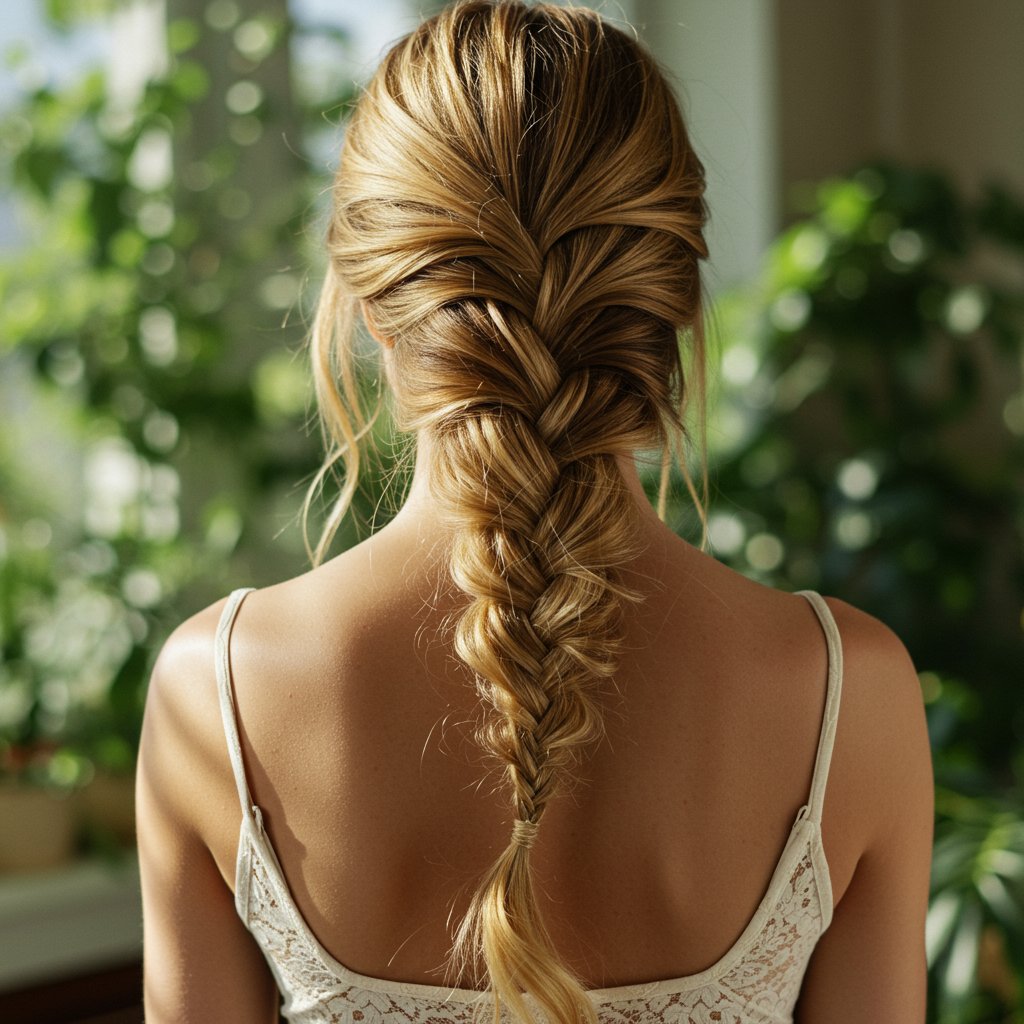
Mastering the fishtail braid technique can seem daunting at first, but it is a surprisingly simple two-strand weave that anyone can learn with a little practice. This comprehensive guide will demystify the process entirely. We will walk you through everything you need to know, from preparing your hair to achieve the best results, to a detailed step-by-step tutorial for the classic fishtail. We'll also explore popular variations, troubleshoot common mistakes, and offer professional tips to elevate your braiding skills. By the end of this guide, you'll have the confidence and knowledge to create flawless fishtail braids on yourself and others.
Understanding the Fishtail Braid: What Makes It Unique?
The fundamental difference between a fishtail braid and a traditional braid lies in its construction. A classic braid uses three distinct sections of hair, which are alternately crossed over one another. The fishtail braid, however, begins by dividing the hair into only two main sections. The braid is then formed by taking a small piece from the outer edge of one section and crossing it over to the inner edge of the opposite section. This process is repeated back and forth, creating the distinctive, intricate pattern that resembles a fish's skeleton or a herringbone weave.
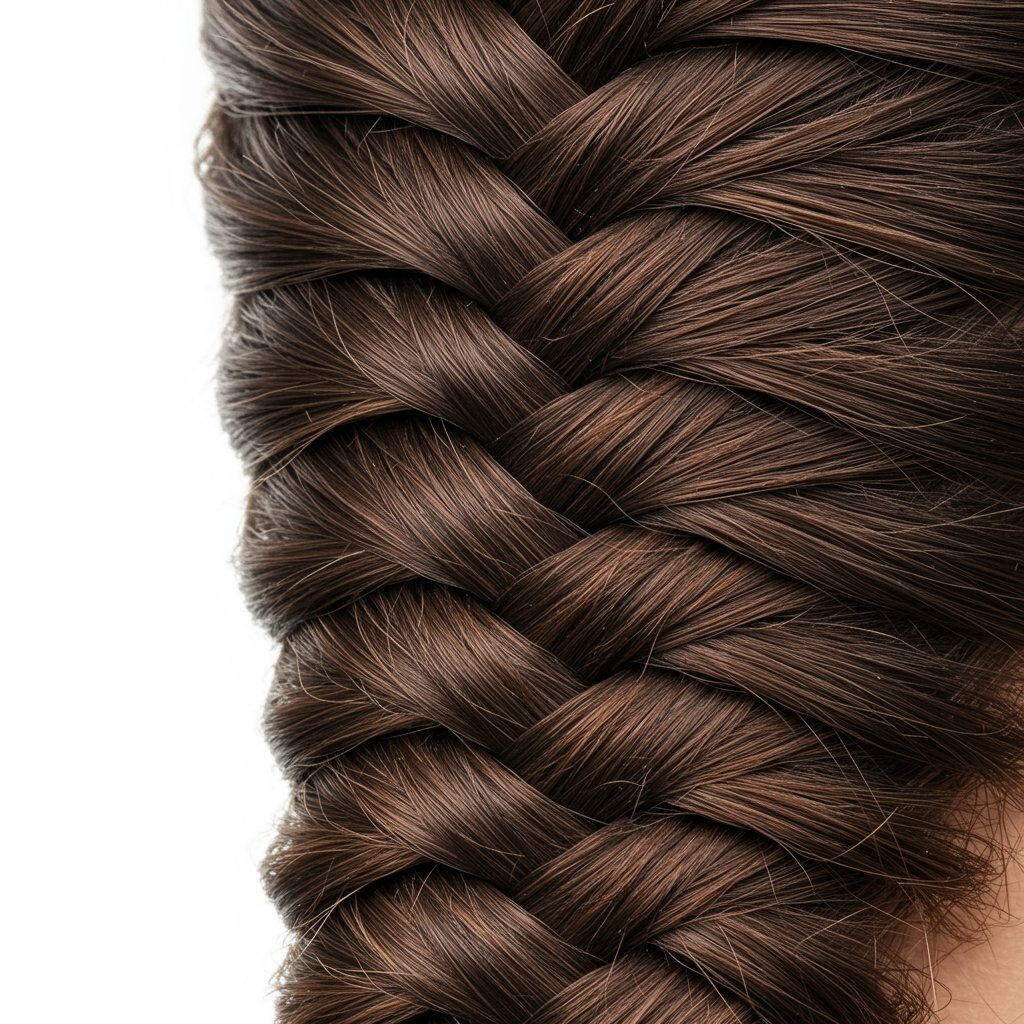
This unique two-strand method results in a flatter, more detailed braid that appears more complex than it actually is. The smaller the subsections you take, the more intricate and defined the pattern will be. Conversely, using larger subsections creates a chunkier, quicker version of the style. This scalability is part of its appeal, allowing for customization based on hair type, desired look, and the amount of time available. Its structure also makes it an excellent candidate for 'pancaking'—gently pulling the edges of the braid to create volume and a softer, more lived-in texture without it completely falling apart.
Prepping Your Hair for the Perfect Fishtail Braid
Proper preparation is the secret to a long-lasting and beautiful fishtail braid. The ideal canvas is not freshly washed, silky hair, which can be too slippery to hold the style. Second or even third-day hair often works best because it has more natural grit and texture, providing a better grip for the strands to hold together. If you must start with clean hair, creating artificial texture is key to success. A quality texturizing spray or a light mist of sea salt spray will give your hair the necessary hold and prevent the braid from loosening too quickly.
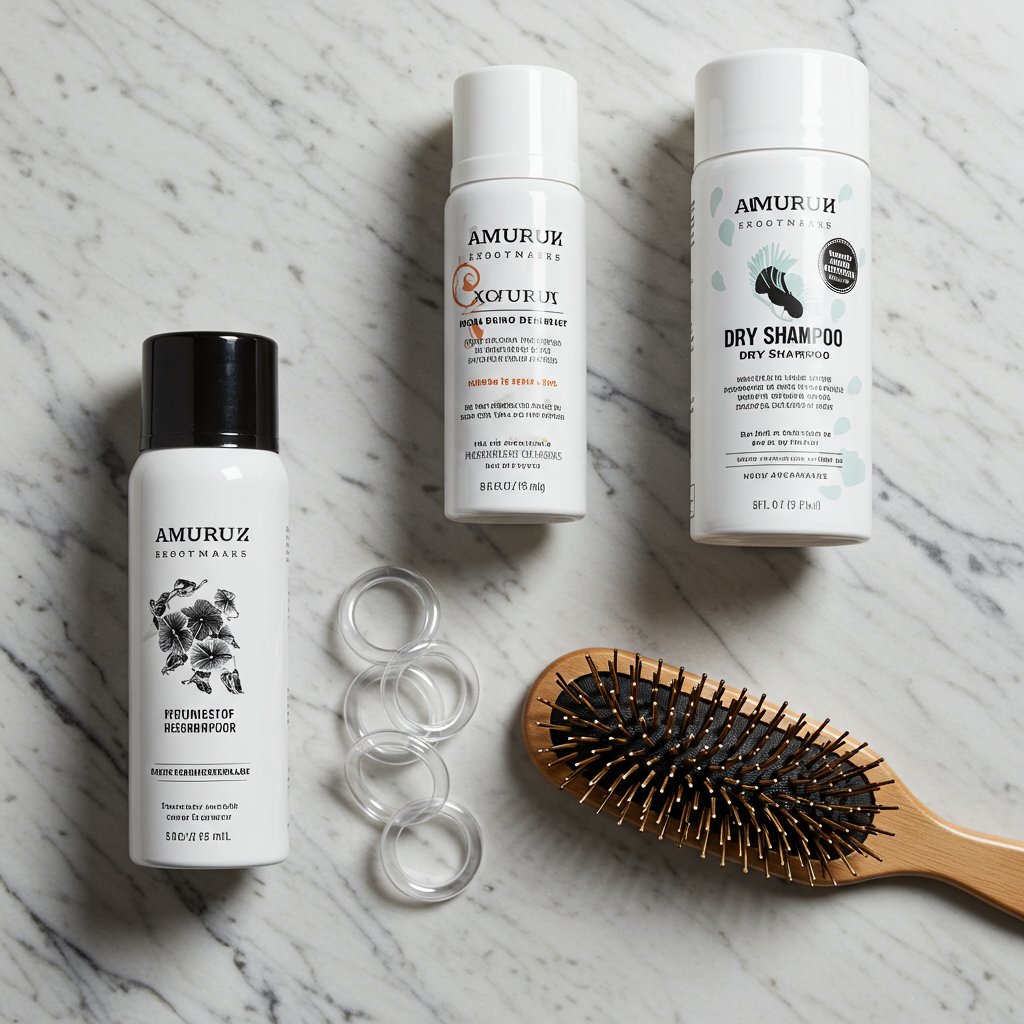
Essential Tools and Products
Before you begin, gather your toolkit. Having everything within reach will make the process smoother and more enjoyable. You will need:- Clear Hair Elastics: Small, clear elastics are perfect for securing the end of the braid discreetly, allowing the hairstyle itself to be the main focus.
- Texturizing Spray or Dry Shampoo: To add grit and volume, especially to fine or clean hair. Apply it from roots to ends before you start braiding.
- A Detangling Brush or Comb: Ensure your hair is completely free of knots and tangles. A smooth start prevents snags and frustration during the braiding process.
- Light-Hold Hairspray or Smoothing Cream: A light mist of hairspray at the end can tame flyaways, while a small amount of smoothing cream can control frizz, particularly for curly or coarse hair types.
The Classic Fishtail Braid: A Detailed Step-by-Step Guide
Here we break down the classic side fishtail braid into simple, manageable steps. Practice in front of a mirror until the motion becomes second nature. Once you master this, you can create a fishtail braid anywhere—down your back, in a ponytail, or as a half-up style.
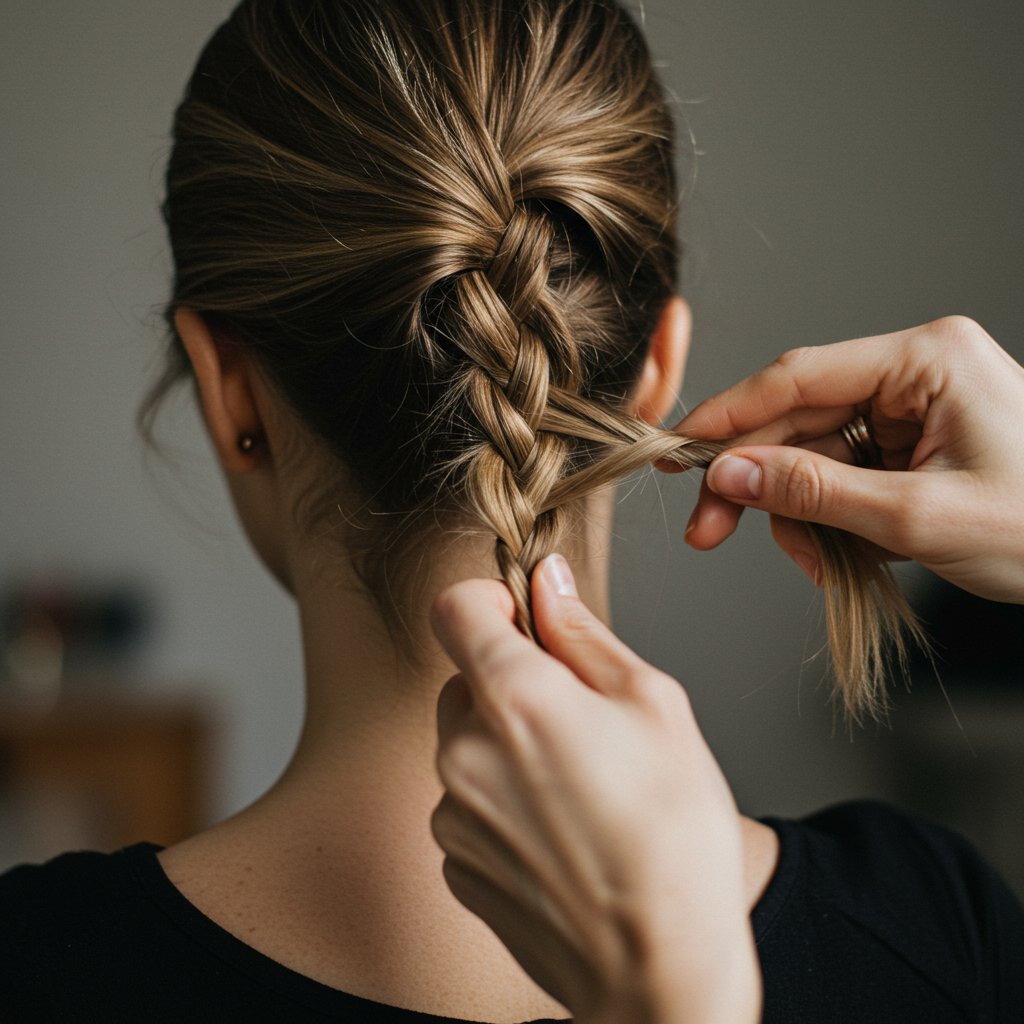
Step 1: Divide and Conquer
Start by sweeping all of your hair to one side over your shoulder. Brush through it to remove any tangles. Divide the hair into two large, equal sections. Let's call them Section 1 (the one closer to your face) and Section 2 (the one further back).Step 2: The First Cross-Over
Take a small, thin piece of hair—about half an inch wide—from the outer edge of Section 2. Cross this small piece over the top of Section 2 and add it to the inside of Section 1. The key is to keep the two main sections separate while integrating the new piece. Section 1 will now be slightly larger.Step 3: Repeat on the Opposite Side
Now, do the exact same thing on the other side. Take a small, thin piece from the outer edge of Section 1. Cross this small piece over the top of Section 1 and add it to the inside of Section 2. Ensure you are pulling the strand tightly enough to keep the braid secure but not so tight that it becomes uncomfortable. You should now see the beginning of the herringbone pattern forming.Step 4: Continue the Weave
Continue this repetitive pattern all the way down the length of your hair. Take a small piece from the outside of Section 2, cross it over, and add it to Section 1. Then, take a small piece from the outside of Section 1, cross it over, and add it to Section 2. Try to take pieces of a consistent size for a uniform look. As you work your way down, your arms might get tired; don't be afraid to pause and shake them out.Step 5: Secure and Refine
Once you reach the end of your hair, leaving about an inch or two at the bottom, secure the braid with a clear elastic. At this point, the braid might look thin and tight. To get that voluminous, effortless look, it's time to 'pancake' the braid. Starting from the bottom and working your way up, gently pull on the outer edges of each woven section. Be careful not to pull it completely apart. This will loosen the braid, make it appear thicker, and create a softer, more romantic finish.Exploring Fishtail Braid Variations for Every Style
Once you've mastered the classic technique, a world of creative fishtail braid variations opens up. These styles build on the fundamental two-strand weave, allowing you to adapt the look for any occasion or hair length. Experimenting with these variations can transform a simple braid into a stunning statement hairstyle.

The French Fishtail Braid
Just like a traditional French braid, this variation starts at the crown of your head and incorporates new hair into each strand as you braid downwards. Begin with a small section of hair at the top of your head and divide it into two. Perform a few stitches of the standard fishtail, and then begin adding small sections of hair from the sides into the main strands before you cross them over. This creates a beautiful, woven effect that sits flat against the head, perfect for an elegant updo or a secure, all-day style.The Dutch Fishtail Braid (Inverted)
The Dutch fishtail follows the same principle as the French fishtail but with one key difference: instead of crossing the small pieces over the main sections, you cross them under. This simple change causes the braid to pop out from the scalp, creating a raised, 3D effect. The Dutch fishtail is bold and defined, making it a fantastic choice for those who want their braid to stand out. It looks especially striking with thick hair or highlights that emphasize its dimension.Fishtail Braid Updos and Accents
The fishtail braid is a wonderful component for more complex styles. You can create a single fishtail braid and twist it into a low bun for a chic and easy updo. For a more romantic look, try a crown braid by creating two fishtail braids on either side of your head and pinning them across the top. You can also use small, thin fishtail braids as accents within a down-style, or create a half-up look by fishtailing the top section of your hair and letting the rest flow freely.Common Fishtail Braid Mistakes and How to Fix Them
Even with a simple technique, a few common issues can arise. Understanding these pitfalls and knowing how to correct them is the key to achieving a flawless fishtail braid every time. Don't get discouraged; every expert was once a beginner.
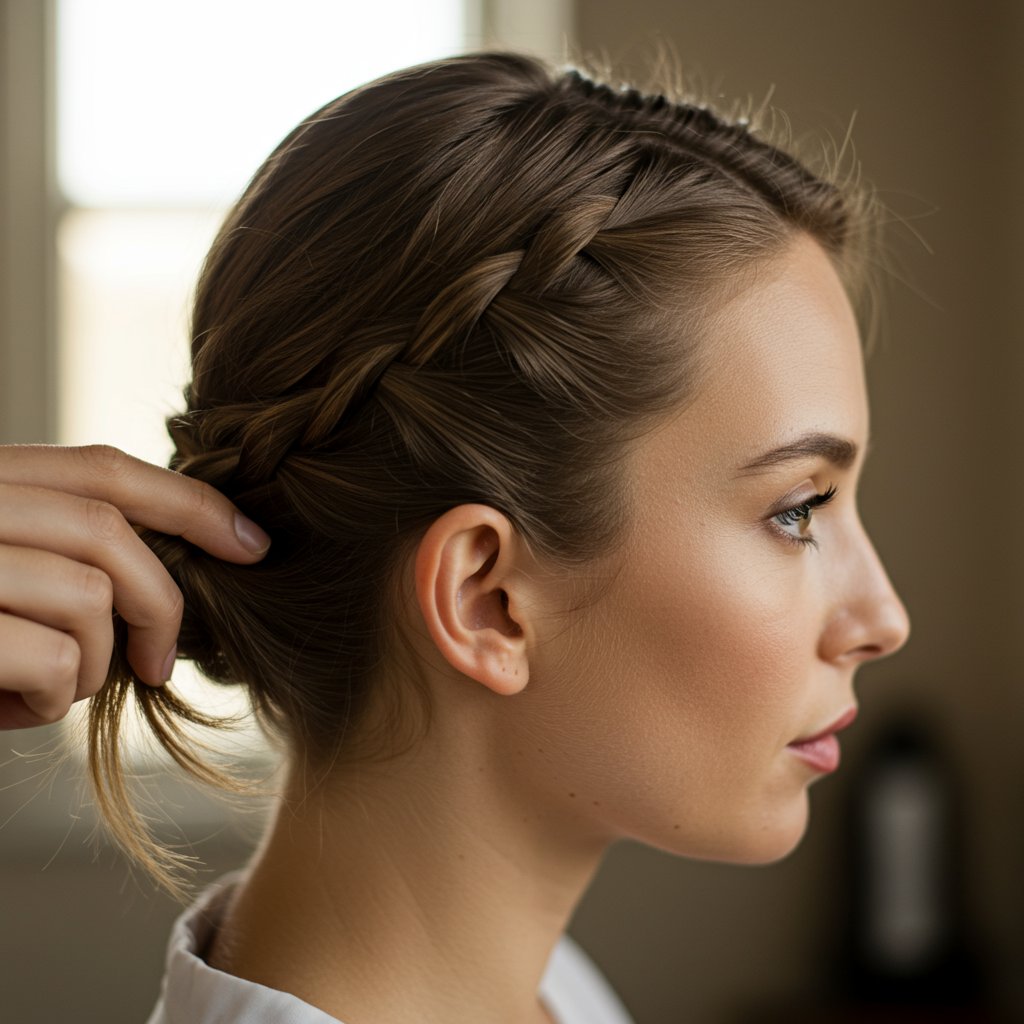
One of the most frequent problems is the braid becoming too loose and falling apart, or the inverse, being uncomfortably tight. The fix lies in tension control. As you weave, maintain a firm, consistent grip on the two main sections. If it feels too loose, you're likely not pulling the small crossover pieces tight enough. If your head starts to hurt, you're pulling too hard. Another common issue is an uneven look, where one side of the braid appears different from the other. This usually happens when the small sections you take are inconsistent in size. Focus on taking pieces of the same thickness from each side to maintain symmetry.
Many people complain about their arms getting tired, especially when braiding their own hair. The easiest solution is to create a side braid, bringing all your hair over one shoulder so you can see your work and rest your arms more easily. If you're doing a braid down your back, take short breaks to relax your shoulders. Finally, flyaways and frizz can disrupt the sleek pattern of the braid. To prevent this, apply a small amount of smoothing serum or anti-frizz cream to your hair before you begin. For any stubborn flyaways that appear after you're done, a light mist of flexible-hold hairspray on your fingertips or a clean mascara wand can smooth them down without making the style stiff.
Adapting the Fishtail Braid for Different Hair Types and Lengths
The beauty of the fishtail braid is its adaptability. With a few minor adjustments to your technique, this style can be successfully created on virtually any hair type, from short and fine to long and curly.

Fishtail Braids for Short Hair
While a long, dramatic fishtail isn't possible, short hair offers unique opportunities for creative braiding. For those with a bob or lob, a half-up fishtail braid is a perfect choice. Simply take the top section of hair from temple to temple and create a fishtail, securing it at the back of your head. Another beautiful option is a small accent braid near the hairline, braiding a small section away from the face to add detail and keep hair out of your eyes.Fishtail Braids for Fine or Thin Hair
The biggest challenge for fine hair is creating the illusion of volume. The 'pancaking' technique is your best friend. After securing your braid, be generous when pulling the edges apart. Start gently and pull a little more with each pass until you achieve the desired fullness. Using a texturizing powder or dry shampoo at the roots before braiding will also provide a thicker base and help the braid hold its expanded shape throughout the day.Fishtail Braids for Thick or Curly Hair
Thick hair creates a wonderfully substantial and dramatic fishtail braid. The main challenge here is control. To manage the volume and prevent the braid from becoming overly bulky, you can work with slightly damp hair or apply a leave-in conditioner or smoothing cream beforehand. For curly hair, you have two options: embrace the texture for a beautiful, bohemian braid with lots of volume and character, or blow-dry it straight first for a sleeker, more defined herringbone pattern. Working with curly hair's natural texture can be stunning, so don't be afraid to let your curls define the style.Pro Tips from Stylists to Elevate Your Fishtail Braid
Ready to take your fishtail braid from everyday to extraordinary? Professional stylists use a few insider tricks to add that extra polish and creativity. Incorporating these tips can transform your braid into a true work of art.
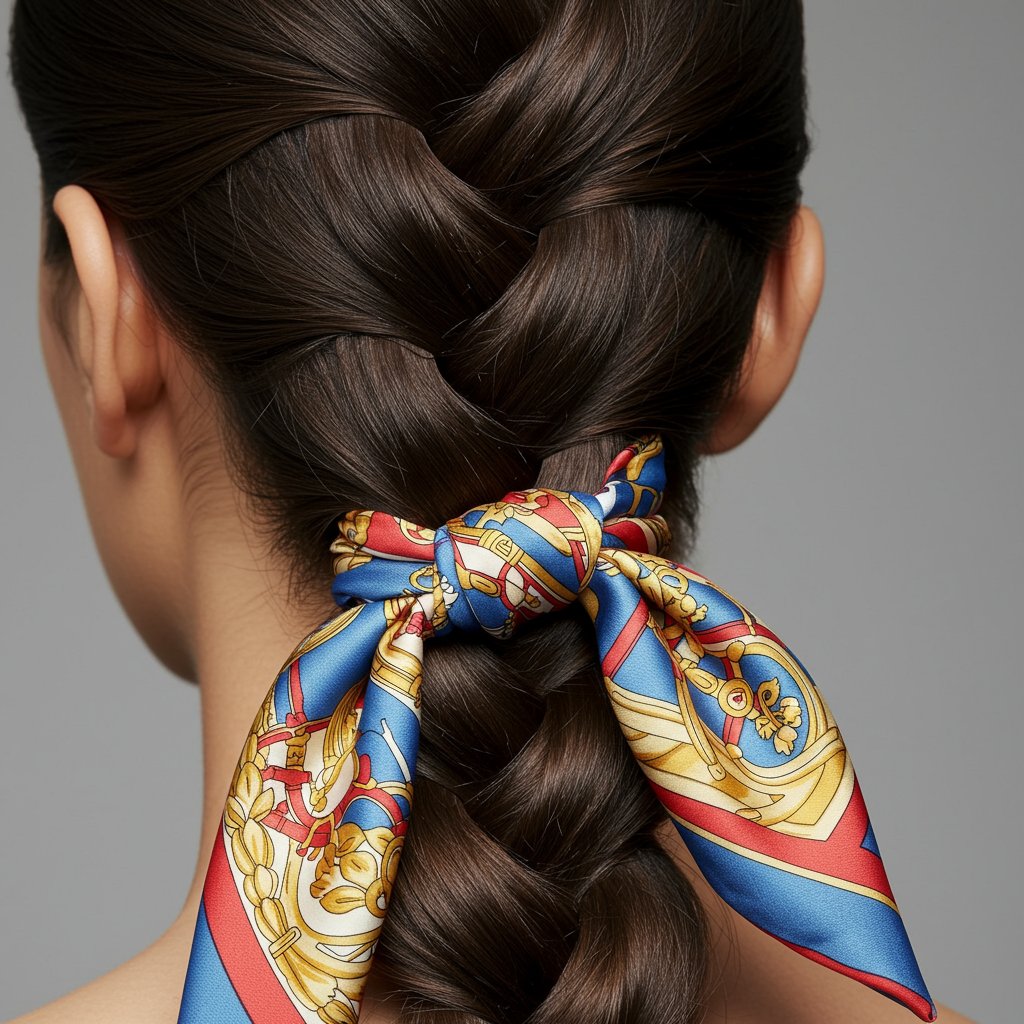
First, consider how hair color can enhance the braid. Highlights, lowlights, and balayage are particularly stunning in a fishtail, as the weaving motion showcases the different tones and adds incredible dimension. The herringbone pattern naturally highlights the nuances in multi-tonal hair, making the color pop in a way that a simple down-style cannot. Another professional tip is to think beyond hair itself and incorporate accessories. Weaving a thin silk scarf or a velvet ribbon into one of the two main sections before you start braiding adds an unexpected pop of color and texture. For a more delicate touch, small floral pins, pearls, or metallic cuffs can be placed throughout the finished braid for a truly customized look.
For a flawless finish, pay attention to the details. Before you start, lightly tease the base where you plan to secure the braid. This gives the elastic something to grip onto and prevents it from slipping. Once the braid is finished and pancaked to your liking, finish with the right product. A spritz of shine spray will give a sleek, polished look, while a puff of texturizing powder or matte styling paste will enhance a messy, boho-chic aesthetic. These final touches are what distinguish a good braid from a great one.
Frequently Asked Questions About the Fishtail Braid
Q1: How long does my hair need to be for a fishtail braid?
For a full fishtail braid, your hair should ideally be shoulder-length or longer. However, those with shorter hair (like a bob) can still enjoy the style by creating smaller accent braids or a half-up version.
Q2: Can I do a fishtail braid on wet hair?
Yes, you can braid wet hair. This can help control frizz and create a tighter, sleeker braid. When your hair dries, it will leave you with beautiful, heatless waves. However, be gentle, as wet hair is more fragile and prone to breakage.Q3: What's the main difference between a fishtail and a French braid?
A fishtail braid uses two sections of hair, with small pieces crossing from one side to the other. A French braid uses three sections and involves adding new hair to the outer sections before crossing them over the middle one. The resulting patterns are very different.Q4: How do I make my fishtail braid last all day?
Start with textured, second-day hair. Use a texturizing spray before you begin. Maintain good tension while braiding, and finish with a light-hold hairspray. For extra security, you can use two elastics at the bottom.Q5: Why does my fishtail braid end up looking like a regular braid?
This usually happens if the pieces you are crossing over are too large. The key to the distinct fishtail look is to take very small, thin sections from the outside to cross over. The smaller the sections, the more intricate the herringbone pattern will be.Q6: Are fishtail braids damaging to my hair?
When done correctly, fishtail braids are not damaging. Avoid pulling the hair too tightly, which can cause tension on the scalp (traction alopecia). Also, use snag-free elastics and be gentle when taking the braid out to prevent breakage.Conclusion: Embrace the Braid
The fishtail braid is more than just a hairstyle; it's a versatile skill that can elevate your look in minutes. From its simple two-strand foundation to its endless creative variations, it offers something for every hair type, length, and occasion. We've covered the essential prep work, the detailed step-by-step process, common pitfalls, and advanced techniques to help you on your journey to mastering this beautiful weave.

Remember that practice is the key to perfection. Don't be discouraged if your first few attempts aren't flawless. With each braid, your muscle memory will improve, and the process will become faster and more intuitive. Experiment with different textures, variations, and accessories to make the style truly your own. And for those special events where you desire an intricate, show-stopping braided style, consider booking an appointment with an experienced stylist. Professional hair salons have artists who can create complex and stunning braided updos that are perfect for making a memorable impression.


